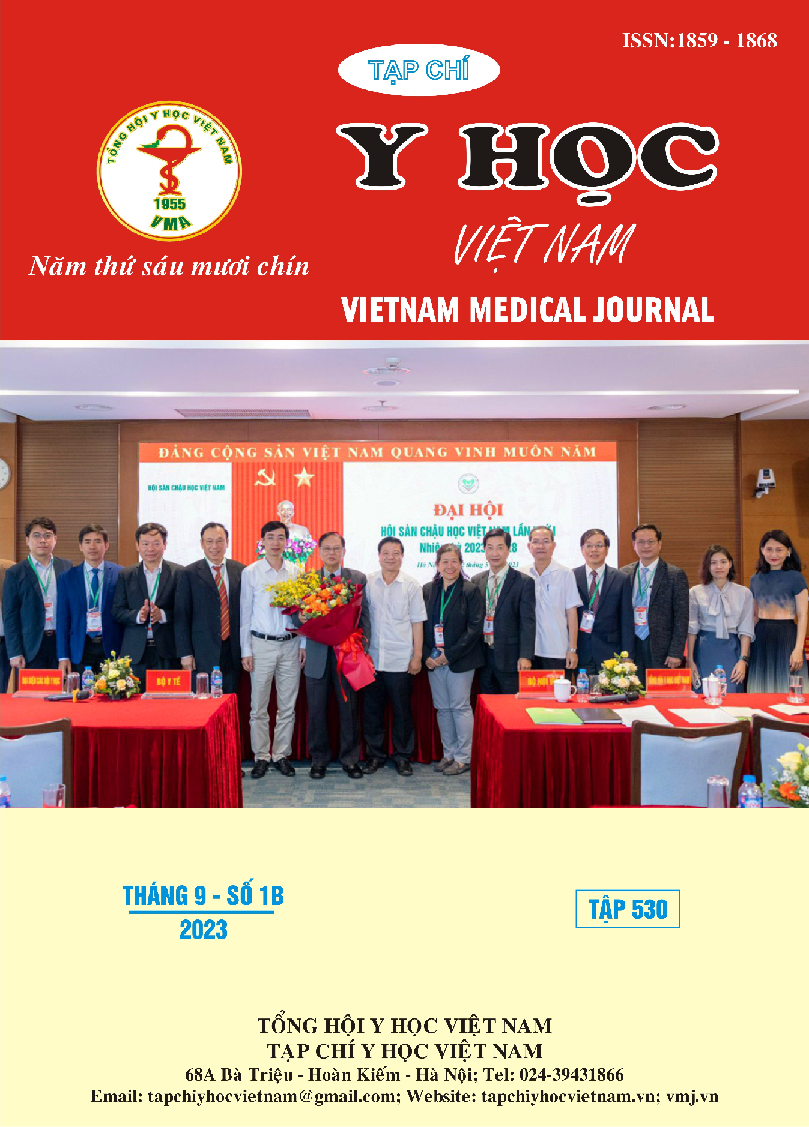RESULTS OF CONSERVATIVE TREATMENT PHIMOSIS FOR CHILDREN AT NURSERY SCHOOLS IN CA MAU CITY
Main Article Content
Abstract
Background: Physiological phimosis, a condition caused by adhesions between the inner surface of the foreskin and the outer surface of the glans penis, results in an unclear separation between the prepuce and glans. Objectives: (1) To determine the rate and classification of foreskin stenosis of children aged 36-72 months in kindergartens in Ca Mau city in 2022-2023; (2) To evaluate of the results of conservative treatment of foreskin stenosis by the method of foreskin dilatation combined with topical Betamethasone 0.05%. Materials and methods: a cross-sectional descriptive study with intervention including 921 children from 36 to 72 months old from 06 kindergartens in Ca Mau city from May 2022 to March 2023. Results: 838/921 (91%) children aged 36-72 months in kindergartens in Ca Mau province were diagnosed with foreskin stenosis. Among children with foreskin stenosis, the rate of type III accounted for the highest rate with 27.3%, followed by type IV with 24.5%, type II 21.3%, type I 17.9%. After 6 weeks of treatment, foreskin morphology: type I 0.0%, type II 2.0%, type III 9.6%, type IV 3.9% and type V84.5%. No complications have been recorded. Conclusion: Conservative treatment of foreskin stenosis in children from kindergartens in Ca Mau city gave good results. This is a minimally invasive, gentle, low-cost method that can be performed in the community.
Article Details
Keywords
Physiological stenosis, children, kindergarten
References
2. Trương Quang Định và Tôn Thị Anh Tú (2014), "Kết quả điều trị bảo tồn hẹp bao quy đầu ở trẻ em", Tạp chí Y học Việt Nam. 2(425), tr. 69 - 75.
3. Bùi Văn Hán (2006), Nghiên cứu lâm sàng và phương pháp điều trị hẹp bao quy đầu tại bệnh viện Việt Đức, Luận văn thạc sĩ y học, Trường Đại Học Y Hà Nội, Hà Nội.
4. Nguyễn Tiến và cs (2005), “Điều trị bảo tồn hẹp bao qui đầu với kem bôi da Steroid”, Y Học TP. Hồ Chí Minh, Tập 9, Phụ bản Số 1 * 2005, tr. 28-33.
5. Lê Anh Tuấn (2006), "Kết quả theo dõi phẫu thuật điều trị dị tật lỗ tiểu thấp tại bệnh viện 103", Y học việt Nam tháng 11. số 2/2010, tr. 336-339.
6. Nguyễn Anh Tuấn, Trần Ngọc Bích và Lê Anh Tuấn (2012), "Đánh giá kết quả điều trị cong dương vật sau mổ dị tật lỗ tiểu lệch thấp", Ngoại Khoa số đặc biệt 1,2,3, tr. 443-446.
7. Ch. Fischer-Klein và M. Rauchenwold (2003), "Triple Incision to Treat Phimosis in Children: An Alternative to Circumcision", Br J Urol Internat. 92, tr. 459-62.
8. Lee C. H., Lee S. D. (2013), "Effect of Topical Steroid (0.05% Clobetasol Propionate) Treatment in Children With Severe Phimosis". Korean J Urol, vol 54, no 9, pp 624-630.
9. Mark A. Monsour và Hyman H. Raeiinovitch and et al (1998), "Medical management of phimosis in children: Our experience with topical steroids", The journal of urology 162, tr. 1162-1164.


